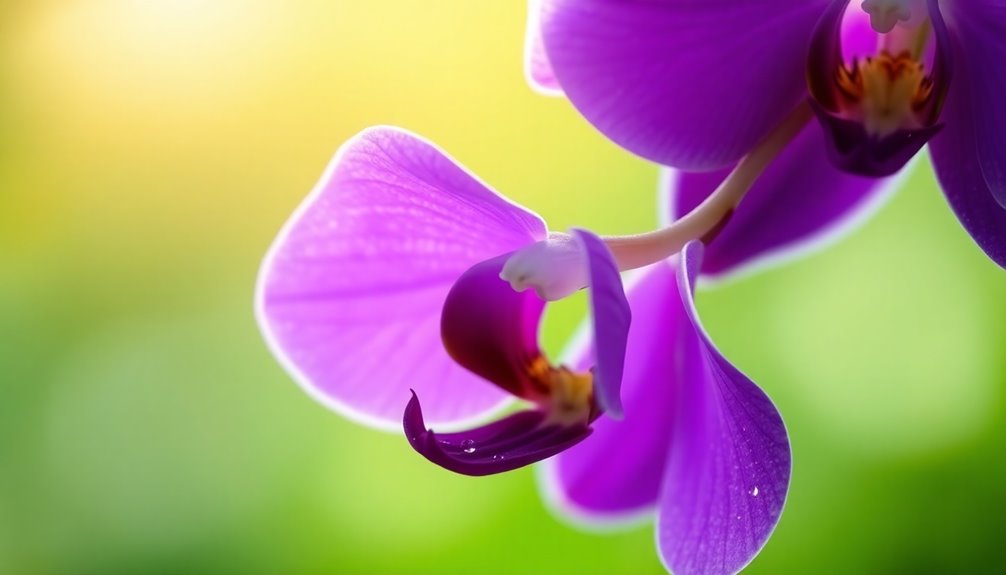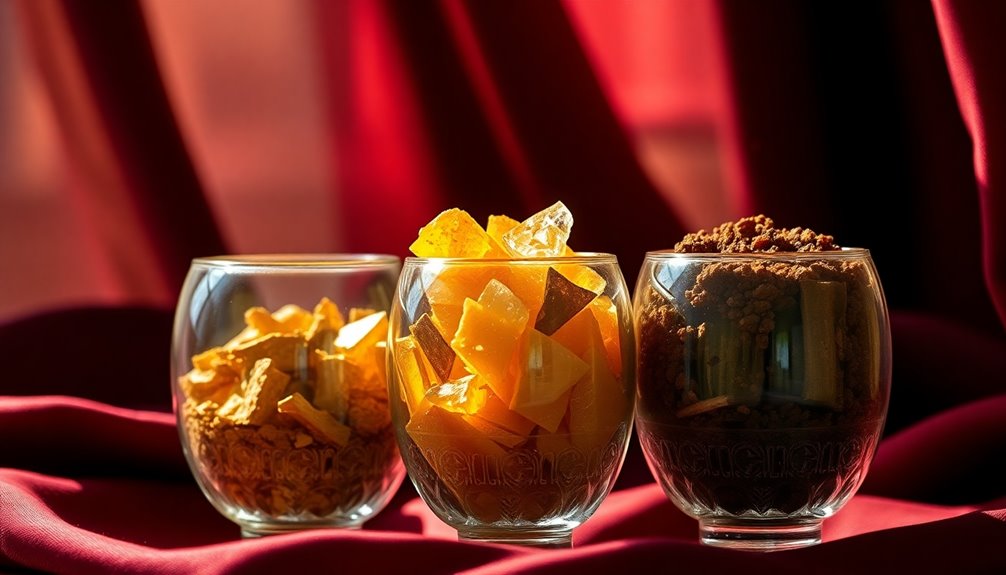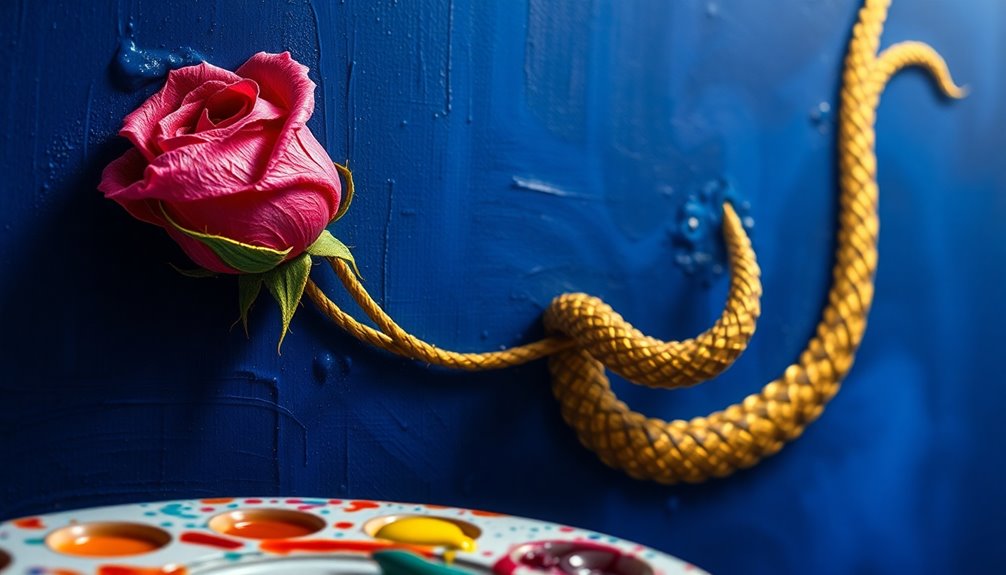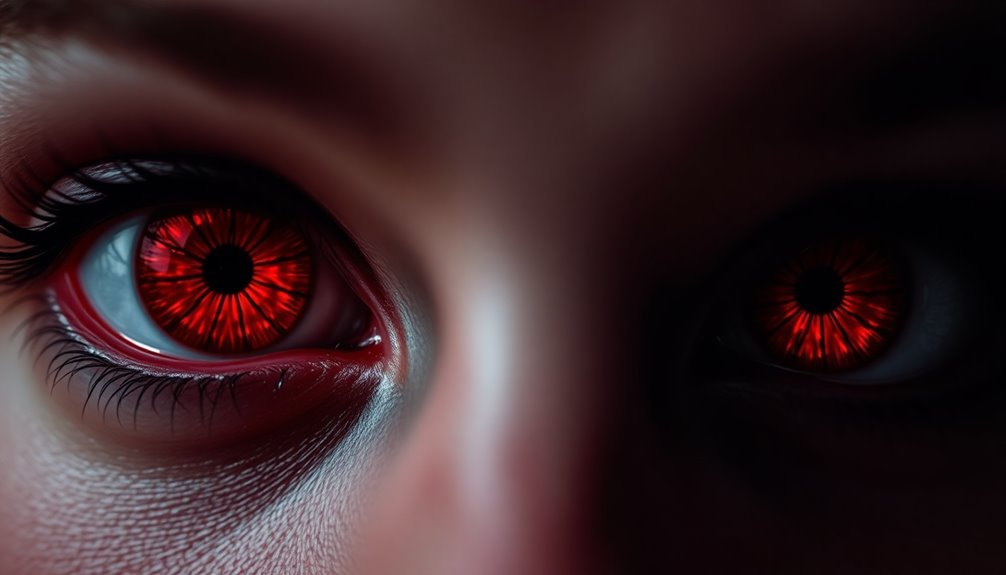Purple is a fascinating color that carries a lot of meaning! It's often linked to nobility and luxury, mostly because in ancient times, only emperors could wear it. Many cultures also see purple as a symbol of spirituality and wisdom. On a psychological level, purple sparks creativity and can help you feel calm. Depending on the shade, it can represent different feelings—like light lavender for romance and dark royal purple for power. Whether in art, fashion, or culture, purple shines brightly. Doesn't it make you curious to learn more about how this color impacts our lives?
Key Takeaways
- Purple symbolizes nobility and luxury, historically reserved for royalty and the elite in various cultures, reflecting its rarity and value.
- It represents creativity and emotional complexity, balancing ambition with introspection and promoting calmness in reflective environments.
- In spiritual contexts, purple signifies wisdom, healing, and sacredness, often used in religious practices to encourage personal reflection.
- The color is associated with empowerment and social change, prominently featured in movements like women's suffrage, symbolizing dignity and self-respect.
- Purple's modern applications in branding and fashion convey sophistication and uniqueness, appealing to younger audiences and promoting creative expression.
Historical Significance of Purple
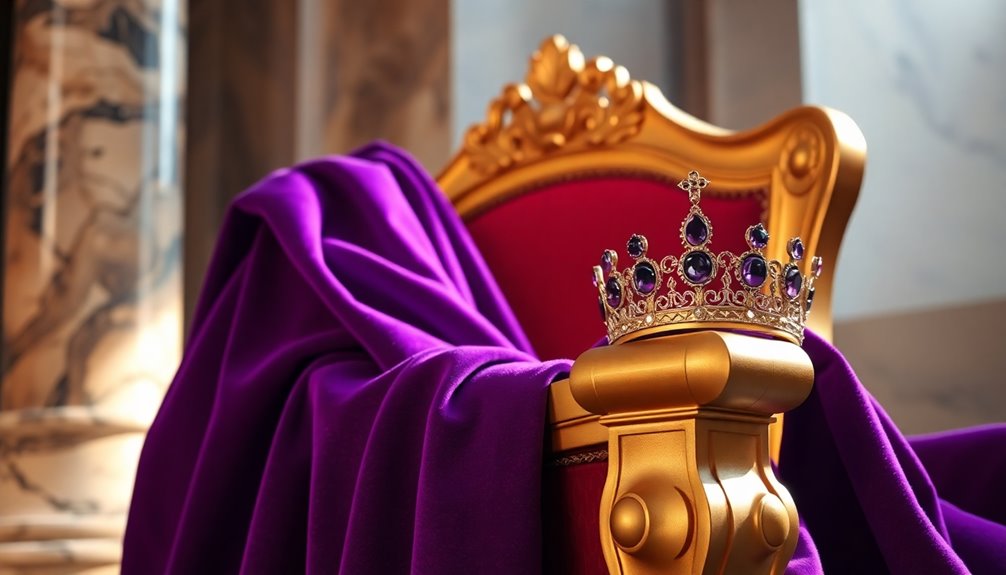
Throughout history, purple has held a unique significance, often symbolizing wealth and power. You might be surprised to learn that purple dye was first made by the ancient Phoenicians from sea snails around 1200 B.C.E. This dye was rare and very expensive, making it closely associated with royalty.
In ancient Rome, only emperors could wear purple togas, reinforcing its status as a mark of nobility. The Byzantine Empire even earned the nickname "Empire of Purple," where the color represented divine power and was reserved for the elite.
Queen Elizabeth I of England took things a step further by limiting purple robes to the royal family. That really shows how special and important this color was!
But purple hasn't just been about wealth; it also played a role in movements like women's suffrage. People chose this vibrant color to symbolize social change and empowerment.
Psychological Meanings of Purple
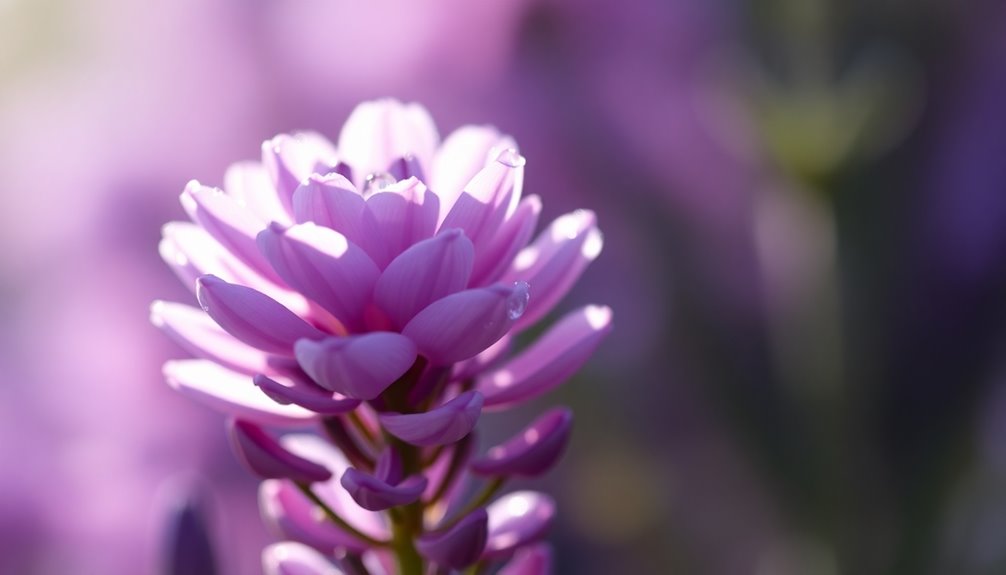
Purple isn't just a pretty color; it can really change how you feel!
It sparks creativity and helps your imagination run wild, making it perfect for artists and dreamers.
Plus, purple brings a sense of calmness, so it's great for those quiet moments when you want to think or reflect.
Emotional Impact of Purple
The emotional impact of purple can be both profound and multifaceted, influencing how you perceive and interact with your environment. This vibrant color evokes feelings of calmness and tranquility, promoting emotional stability. When you surround yourself with purple, it's like giving your mind a gentle hug!
Different shades of purple can create various feelings. Here's a quick look at how they affect you:
| Shade of Purple | Emotion Evoked | Context |
|---|---|---|
| Light Lavender | Romance, Calmness | Cozy evenings |
| Medium Purple | Creativity, Imagination | Artistic spaces |
| Dark Purple | Sadness, Mourning | Reflective moments |
| Bright Purple | Energy, Excitement | Celebratory events |
Research shows that purple can positively affect your mood, especially in settings like colleges. It helps you relax and focus. However, too much purple might cause anxiety for some. It's important to find balance. Embrace the calming effect of purple, but remember to mix it with other colors for a harmonious feel. So go ahead, explore the emotional power of purple and see how it brightens your days!
Creativity and Imagination Enhancement
Surrounding yourself with purple can spark your creativity and imagination, making it an ideal choice for artistic spaces. This vibrant color is known to inspire innovative thinking, helping you express yourself in new and exciting ways. When you're in an environment filled with purple hues, your mind feels stimulated, allowing fresh ideas to flow.
Research shows that purple can also enhance emotional stability. Feeling calm and relaxed lets you dive deeper into your thoughts, which is perfect for creating art or writing stories. It's like giving your imagination the freedom to explore!
In schools, students surrounded by purple often focus better and perform well in creative tasks.
The historical connection of purple to nobility and luxury can inspire you, too. Embracing this color may encourage you to feel proud of your own unique creativity. You'll start to believe in your artistic identity, feeling confident to share your ideas with the world.
Cultural Interpretations of Purple
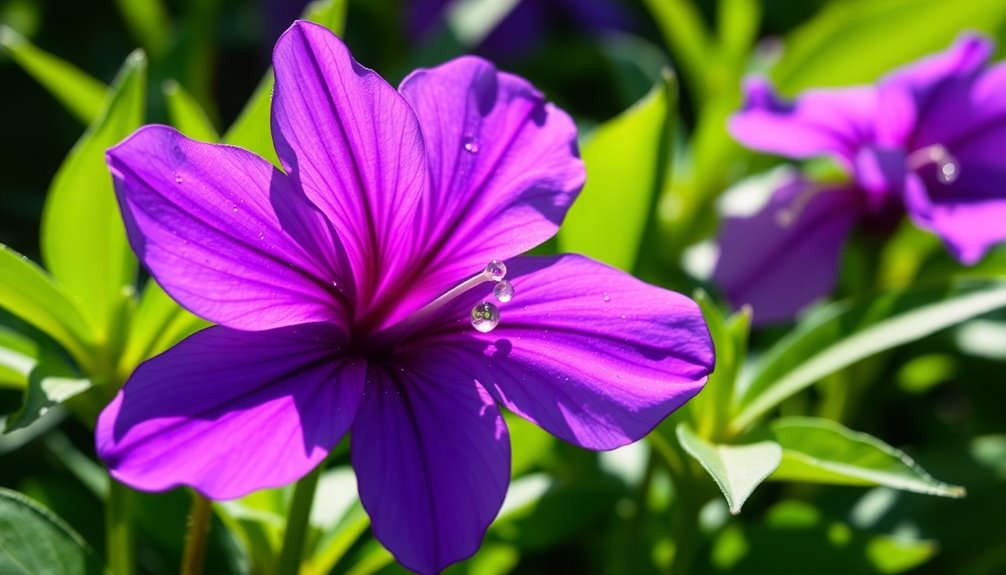
Color often carries deep meanings across different cultures, and purple stands out as a particularly rich example. In ancient Rome and Greece, purple was a symbol of nobility and luxury. It was reserved for the elite, as the dye came from rare sea snails, making it very expensive! This idea of wealth connects to the purple color psychology we see today.
In Eastern cultures, purple has fascinating meanings. In Japan, it's associated with wealth, while in Buddhism, it represents wisdom. Meanwhile, in China, it symbolizes spiritual awareness, and in Hinduism, it connects with divinity.
In Africa, purple signifies healing among the Maasai people and is a color of celebration for the Yoruba culture. This shows how purple brings positive feelings in different places.
In Western cultures, purple is linked to creativity and mysticism. It's a proud color in LGBTQ+ representation, symbolizing diversity and inclusion. Additionally, during the Women's Suffrage Movement, purple represented dignity and self-respect, highlighting its role in social change.
Isn't it exciting how purple can mean so many wonderful things around the world?
Shades and Variations of Purple

Let's explore the different shades of purple and what they mean!
Light shades like lavender can make you feel calm and relaxed, while darker shades like royal purple show power and luxury.
Each variation has its own special vibe, and understanding them can help you appreciate purple even more!
Light vs. Dark Shades
In the world of purple, the distinction between light and dark shades reveals a rich tapestry of emotions and meanings.
You'll find that light shades of purple, like lavender and lilac, often symbolize femininity, romance, and calmness. These colors are perfect for creating a gentle and inviting atmosphere.
On the other hand, dark shades of purple, such as royal purple and plum, convey feelings of power, authority, and luxury. They bring a sense of sophistication and depth.
Here's a quick look at the symbolism of these shades:
- Light shades of purple: Calmness, grace, and romance.
- Dark shades of purple: Power, authority, and luxury.
- Violet: Passion, creativity, and ambition.
- Amethyst: Clarity, healing, and spiritual insight.
The contrast between light and dark purples can evoke a beautiful duality. Light purples often feel positive and gentle, while dark purples may reflect depth and complexity.
Cultural Interpretations of Shades
Purple's rich symbolism varies across cultures, influencing how different shades are perceived and used. Each shade of purple carries a unique meaning that can brighten your day.
For instance, lavender isn't just pretty; it symbolizes femininity, romance, and calmness. You might love using lavender in your home decor to create a soothing space.
On the other hand, violet is full of passion and ambition. It's vibrant and energetic, making it a popular choice in fashion. You'll often see violet in stylish outfits that make a statement!
When you think of royalty, royal purple comes to mind. This shade reflects power and authority, and it was once reserved for nobility. Wearing royal purple can make you feel important and special.
Then there's mauve, which brings a sense of nostalgia and gentility. It's often found in vintage designs, adding a delicate touch to your surroundings.
Finally, amethyst represents mystery and transformation, linked to the beautiful gemstone thought to promote clarity and healing.
With so many shades of purple, you can find one that speaks to you!
Symbolism in Art and Literature

Throughout history, the color purple has played a significant role in art and literature, embodying themes of power, complexity, and transformation. This vibrant hue often represents wisdom and spirituality, making it a favorite among artists and writers alike.
In art, you might notice purple symbolizing:
- Nobility and luxury, especially in classical paintings where it adorns royal figures.
- Emotional depth, with characters facing challenges that lead to personal growth.
- Extravagance, as seen in "purple prose," where writing becomes rich and ornate.
- Feminism and empowerment, highlighting women's struggles and achievements in modern literature.
These elements come together beautifully, showcasing how purple can convey profound messages.
In films like "The Color Purple," you'll see themes of resilience and transformation, emphasizing the journey of identity.
When you explore art or literature, keep an eye out for purple. It's not just a color; it's a powerful symbol that adds layers to stories and visuals.
Purple in Fashion and Design
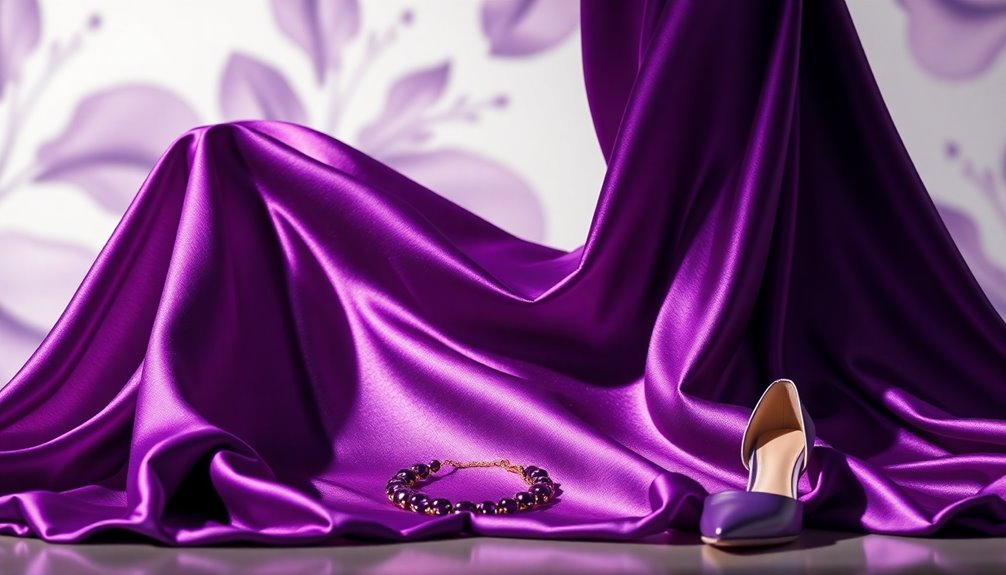
Get ready to explore how purple plays a big role in fashion and design!
This color isn't just pretty; it suggests luxury and makes you feel special when you wear it or see it in a room.
Plus, purple's unique mix of shades can spark creativity, making it a favorite for trendy brands and stylish spaces.
Luxury Branding Strategies
When it comes to luxury branding, the color purple stands out as a powerful symbol of elegance and exclusivity. This vibrant hue has a rich history tied to wealth and royalty, making it a favorite among high-end brands. Purple makes products feel special and unique, drawing consumers in with its allure.
Here are some reasons why brands love using purple:
- Historical Significance: Purple's ties to royalty give it an air of sophistication.
- Emotional Appeal: It evokes feelings of ambition and high status, making you feel important.
- Visual Impact: Purple stands out in advertising, catching the eye and holding attention.
- Versatile Use: It works beautifully in fashion and interior design, creating luxurious spaces.
From royal purple gowns to deep plum decor in fancy restaurants, purple helps create an upscale atmosphere.
When brands use purple in their marketing and packaging, they reinforce the perception of quality and luxury.
Color Psychology Applications**
Embracing the richness of purple in fashion and design can elevate your style and surroundings, infusing them with a sense of luxury and sophistication. Whether you're dressing up or decorating a space, purple offers a unique touch that stands out.
In fashion, deep shades of purple often symbolize elegance, making them a favorite for high-end brands. Lighter shades, like lavender, bring a sense of grace and femininity. You can mix purple with other colors to create exciting combinations that catch the eye.
In interior design, shades of purple help create a calming atmosphere. Think of your bedroom or a cozy spa, where purple can promote relaxation and introspection. Here's a quick look at how purple can enhance your life:
| Fashion | Interior Design |
|---|---|
| Luxury and Sophistication | Calming Atmosphere |
| Versatile Combinations | Promotes Relaxation |
| Evokes Creativity | Inspires Introspection |
Using purple allows you to express creativity and uniqueness, whether in your outfits or home decor. So, why not add a splash of purple to your life today?
Spiritual Associations With Purple

Purple holds a unique place in the domain of spirituality, often symbolizing divine connection and enlightenment. When you think of purple, envision a world of deeper understanding and inner peace. This vibrant color is rich with meaning and draws you closer to spiritual truths.
Here are some key associations with purple:
- Sacredness: In many religions, purple signifies sacred moments and divine presence.
- Wisdom: In Eastern cultures, the color represents spiritual awareness and enlightenment, especially in Buddhism and Hinduism.
- Introspection: Purple invites you to look within, encouraging personal reflection and exploration of your beliefs.
- Healing: Amethyst, a lovely shade of purple, is believed to enhance clarity and intuition, supporting your spiritual growth.
You might notice purple used during special times in Christianity, like Lent and Advent. It serves as a reminder to reflect and prepare for important spiritual events.
Embracing the color purple can help you connect with your inner self and explore the beautiful aspects of spirituality and divinity. So, let purple inspire your journey towards enlightenment and deeper understanding!
Impact on Emotions and Mood
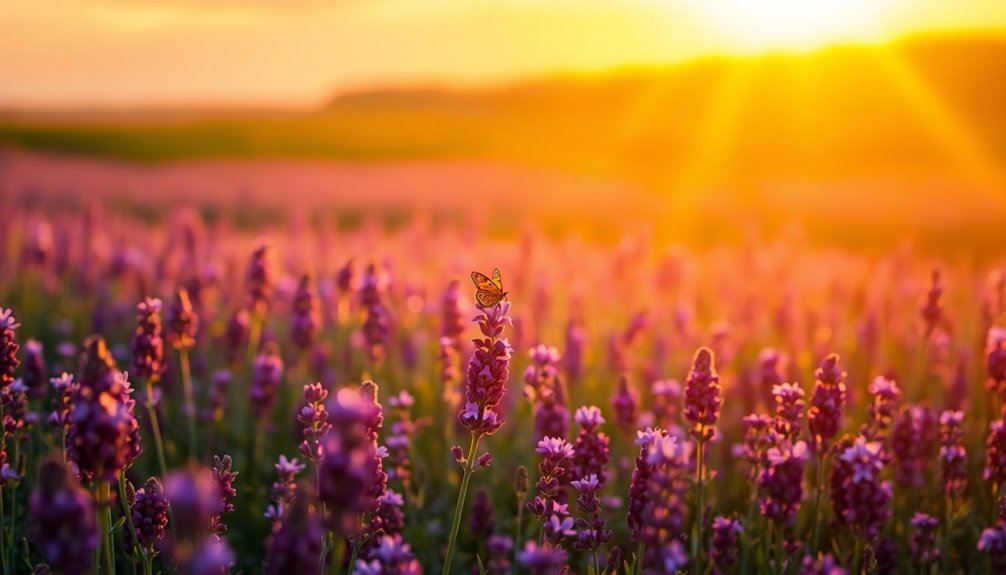
The spiritual qualities of purple extend into its profound impact on emotions and mood. When you see purple, it can fill you with feelings of calmness and tranquility. This is why many people choose it for spaces where they want to relax or think deeply.
Purple also sparks creativity and imagination, helping you focus on new ideas and solutions. Isn't that exciting?
However, purple carries emotional complexity. It represents a mix of feelings. On one hand, it can inspire ambition and confidence; on the other, it might remind you of sadness or anxiety. This balance makes it a rich color to experience.
In color psychology, purple is linked to luxury and sophistication. When you surround yourself with purple, it can boost your mood and improve how you see yourself.
Plus, studies suggest that purple might help you feel more emotionally stable and resilient. That means you can bounce back from tough times more easily.
Modern Uses of Purple
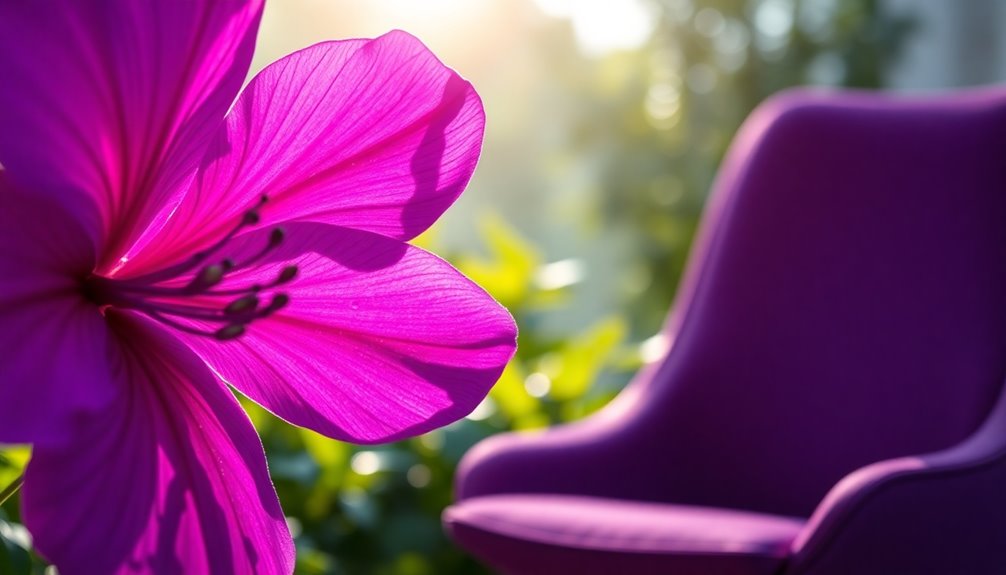
Many brands leverage purple to convey a sense of luxury and sophistication, making it a popular choice in modern marketing. You'll notice that companies like Hallmark and Taco Bell use purple in their logos to attract consumers looking for premium products.
This color isn't just for logos; it's also a favorite in interior design. Here are some ways purple is used today:
- Creating Calm: Spas and upscale hotels often feature purple hues to create relaxing environments.
- Fashion Statements: Designers showcase shades like lavender and plum, adding creativity and uniqueness to their collections.
- Emotional Marketing: Purple is associated with innovation and artistic expression, particularly in creative industries.
- Digital Appeal: In the digital world, purple's vibrant qualities make it popular for websites and apps targeting younger audiences.
You might find that purple prose, or writing that's overly descriptive, can sometimes overwhelm readers.
But when used thoughtfully, purple brings joy and elegance to various fields. So, next time you see this stunning color, remember its powerful role in making things feel special and exciting!
Future Trends in Purple Symbolism
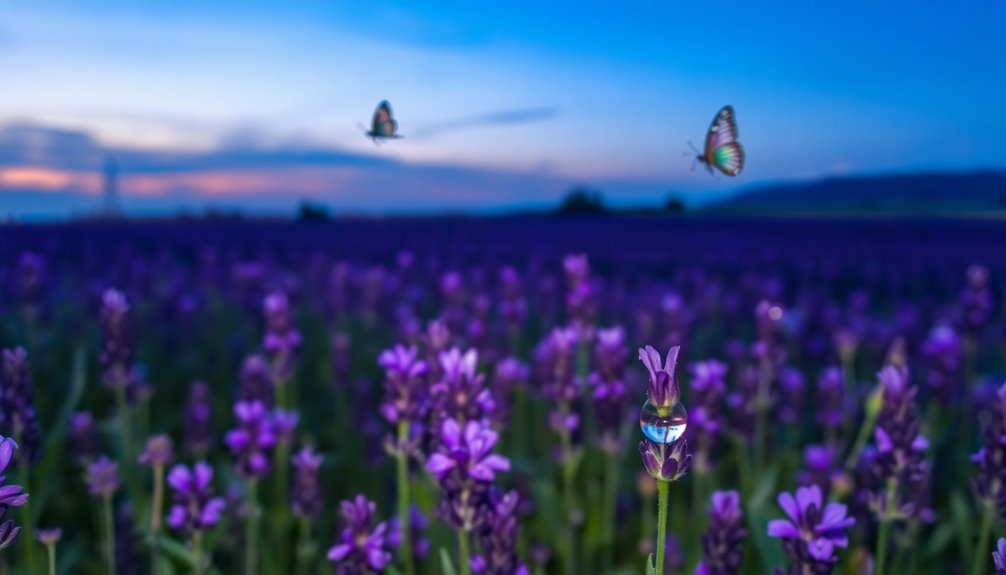
As trends evolve, the symbolism of purple continues to shift, reflecting broader societal changes. Purple is becoming even more popular in design, especially because it stands for luxury and creativity. People love using purple in their homes to create vibrant spaces that help them relax and think outside the box.
You might also notice that purple is making its way into fashion and products thanks to new digital printing technologies. This means you'll see even more exciting uses of purple in things you wear and use every day!
But that's not all—purple has a special place in social movements, too. It represents the LGBTQ+ community and helps raise awareness for mental health.
As society values inclusivity and diversity more each day, purple will likely continue to grow in meaning. It symbolizes empowerment and uniqueness, helping everyone feel proud of who they are.
Frequently Asked Questions
What Does the Color Purple Symbolize?
The color purple has so much to say! It often symbolizes royalty and luxury, making you feel special.
You might also connect it with creativity and spirituality, sparking your imagination. In some cultures, purple shows mourning, while in others, it stands for good fortune.
Plus, it's a big part of LGBTQ+ pride, representing diversity and inclusion.
What Does a Purple Person Represent?
Have you ever met someone who stands out with their creativity and unique style? A purple person represents just that! They embrace individuality and express themselves artistically.
You'll find they value inclusivity and diversity, connecting with many different people. Often, they possess deep emotions and strong intuition, making them aware of their surroundings.
With a touch of ambition and leadership, purple people balance passion and calmness, making them truly special!
What Does the Color Purple Mean Emotionally?
The color purple brings out a mix of feelings. It can spark your creativity, making you feel inspired and imaginative.
When you see purple, you might also feel calm and peaceful, perfect for thinking deeply.
However, purple can sometimes feel heavy, too, reminding some of sadness or anxiety.
It's a color that shows complexity, bravery, and independence.
What Does Purple Symbolize in the Bible?
When you think about purple in the Bible, imagine a rich, deep color that shines with significance.
Purple symbolizes royalty and wealth, like the robes worn by kings and the High Priest. It's also a sign of God's presence, found in temple decorations.
Sometimes, it represents repentance and sorrow, inviting reflection.
Conclusion
To sum up, purple is like a magical bridge connecting history, emotions, and culture. It's a color that whispers stories of royalty, creativity, and spirituality. Whether you see it in art or nature, purple brings joy and inspires wonder. As we move forward, its symbolism will continue to evolve, reminding us of the beauty and depth that colors can hold. So, embrace purple in your life—it's a lovely way to express yourself and your feelings!

